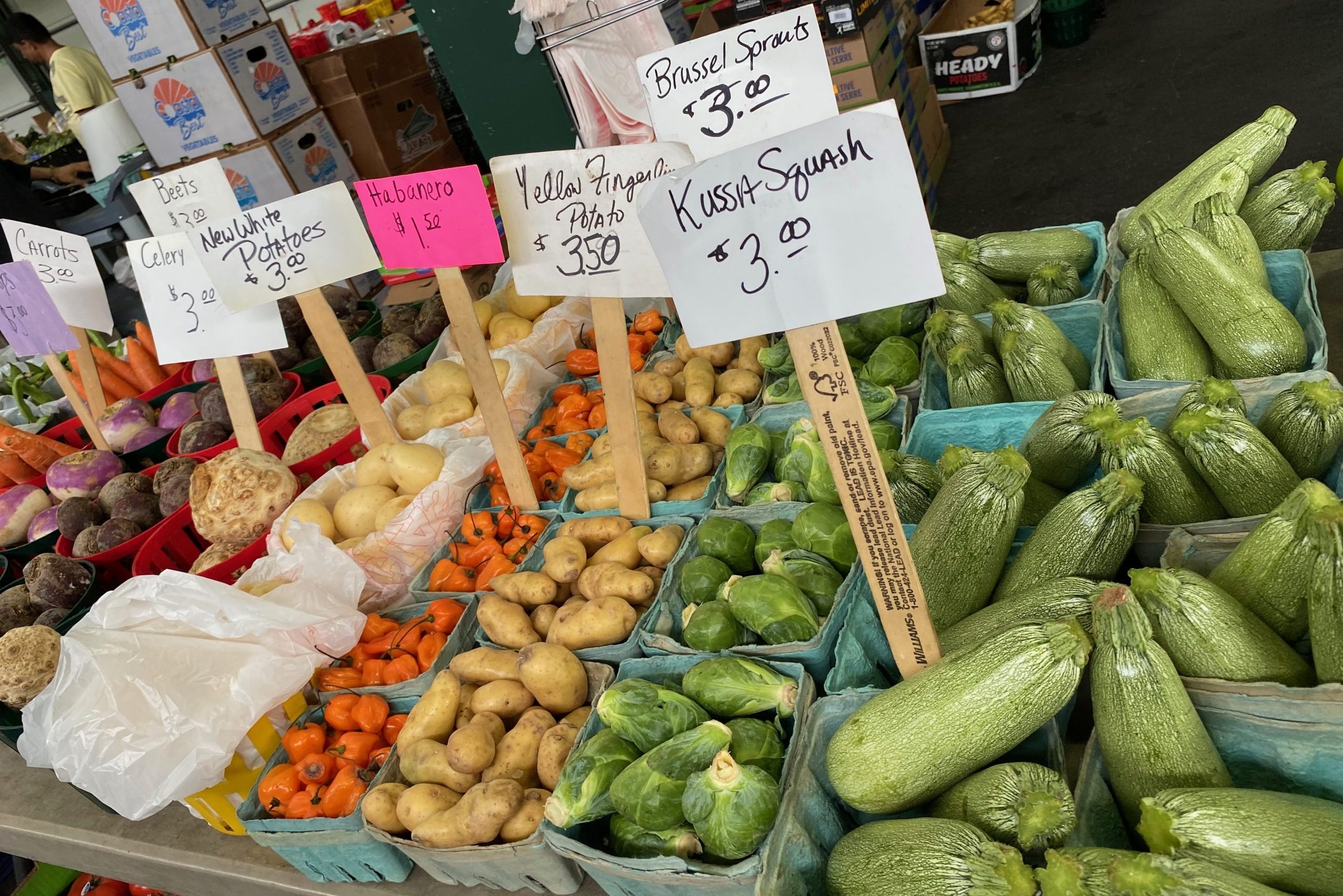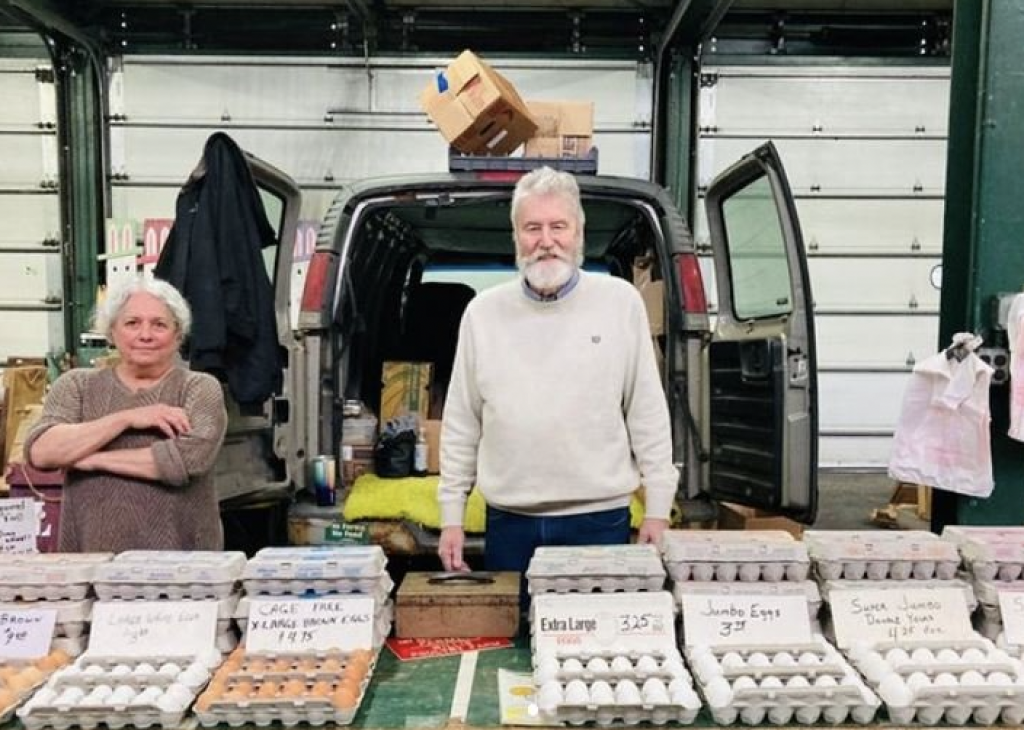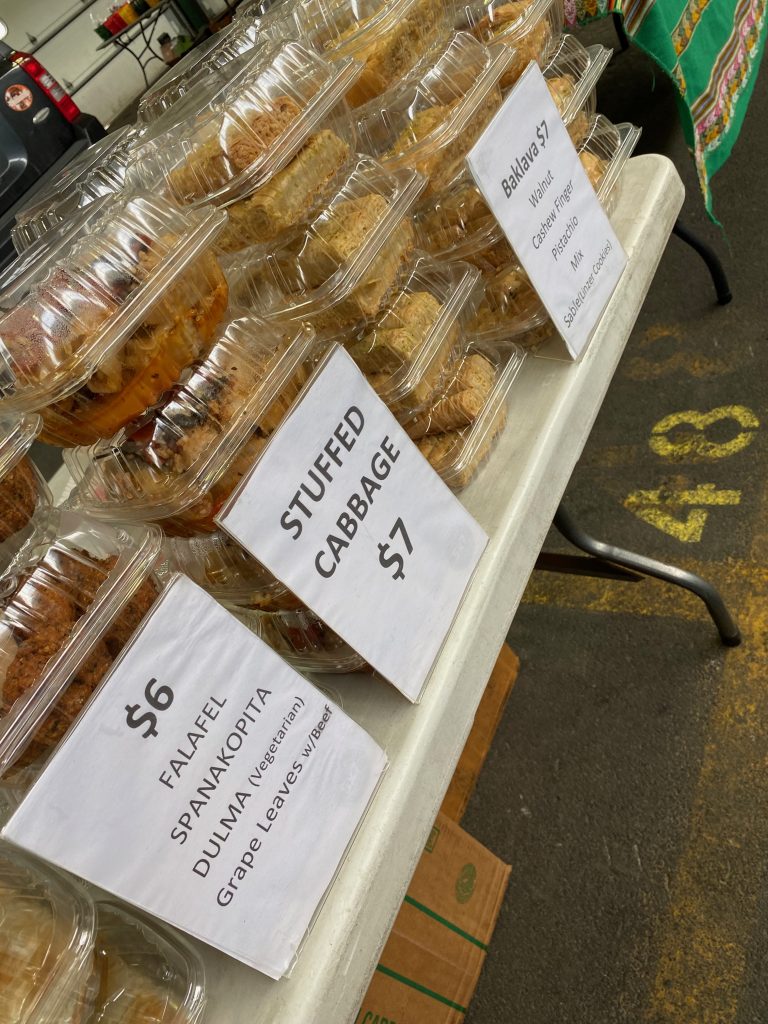CNY food scene pays the high price of inflation
CNY food scene pays the high price of inflation

At Goodies Mediterranean Grill and Cuisine, owner Chucri Ayoub has had the same prices for 13 years: $4 for Tabouli salad, $5 for Spinach pie, $6 for vegetarian Grape leaves and $7 for hummus and pita. But now the ingredients cost more.
“See this Tabouli salad, the prices for everything in it went up,” he said. “Parsley went up, tomatoes went up, onions went up, and the cost (to make) is almost so close to the $4 I sell it at so I keep it at $4 and my customers love that.” If he were to raise the price on the salad, he’d have to raise the price on everything.
All of this is thanks to inflation.
Inflation is a sustained increase in prices that result in a decrease of the purchasing power of money. The higher prices on common purchases like fuel or food drive up the costs of everything else, and everyone pays more.
In November of 2022, menu prices were increasing but not as much as grocery store prices, according to the Consumer Price Index. In March 2023, food prices at bars and restaurants rose 8.8% over the previous year, according to the U.S. Bureau of Labor Statistics.
The inflation rates aren’t just affecting food products, they’re affecting liquor prices as well.
“The liquor and beer prices are usually pretty consistent but in the past year, everything has gone up,” said Michele Roesch, owner of Brasserie Bar and Bistro in Camillus and soon to open Emerald Cocktail Kitchen on Tipperary Hill. “At the Bistro, we’ve had to increase our prices three times this year. At the Cocktail Kitchen, we are opening with higher prices than what I would like to open with– but we are kind of in a position where we have to.”
While Roesch has had to increase prices, Ayoub says he won’t let it affect him.
“For 13 years, everything has been the same price,” he said. “It’s still the same price, the only difference is no one is selling at my prices because the cost (to make) is getting too close to the sale so they’re increasing, my prices will stay the same and I don’t care.”
But if the prices of ingredients cost more than what he sells the dish for, Ayoub said he would be forced to raise the price.
Restaurants aren’t the only businesses affected by inflation. At the CNY Regional Market, frequent shopper Jessica Gorman said since ingredient prices are increasing, the cost of prepared food is up, too.
“I have noticed a considerable difference in prices, especially on some staple pantry items like eggs and butter,” Gorman said. “I purchase a lot of baked goods since I hate baking and those items that use those staple ingredients have gone up in price.”
Farms and wholesale sellers are also feeling the impact.

Joe Willis of Willis Poultry Farm said egg prices follow the cost of the market, not the cost of production.
“With market prices going down and feed prices going up, there is a rubber band effect. There’s days where you know you’re throwing away $1,000 and then days where you make $1,000 but you just have to wait until the end of the year to see if you offset,” Willis said.
He explained farmers cannot just raise the prices of eggs because others do, they have to follow the market or wholesale prices to remain competitive.
From March 2022 to March 2023, eggs prices increased 36%. But in the spring of 2023, prices started to fall, the cost of a dozen eggs dropping to a $1.94 a dozen in May from $2.74 a month prior, according to the U.S. Department of Agriculture.
According to Willis, the wholesale egg market was $547 for a trailer load of eggs at the farm and now they’re worth $220.
“What drove the market up is an egg clearing house,” Willis said. “You had 169 people trying to buy eggs but only 4 people were selling, so there were no eggs.”
Another farm in Upstate NY believes inflation is a problem but is not the main problem.
Ontario Orchards, a farm and market selling local and Central NY products, in Oswego has increased prices but doesn’t claim to be affected by inflation.
“We increased our prices but I think it’s all relative,” manager Kathy Ouellette said. “As the minimum wage increases, prices are increasing. Customers are just adjusting.”
Along with Ouellette, Roesch agrees that labor shortages are another factor for increased prices, fueled by the increased minimum wage. Businesses cannot afford to pay employees what they want, and the employees look for work elsewhere.
“My best customers are diners and even with working with eggs, if they’re working with week-old eggs, they aren’t going to be happy,” Willis said. “With the labor market right now trying to keep people in the restaurant, you have to keep those people very happy because they’re hard to come by.”
Businesses that keep employees happy can be appealing to customers like Gorman, too.
“I think people are leaning on some normalcy after the pandemic and though I try to support locals, I find myself cooking at home to cut down on some costs,” Gorman said. “When I look at the price of goods, I am looking at the packaging and seeing how they treat their employees and I’m willing to pay increased prices to support local businesses if they’re prioritizing worker rights and have sustainable products.”

At the Regional Market, the prices at Goodies will stay the same, said owner Ayoub.
“For 13 years, everything has been the same price.”





